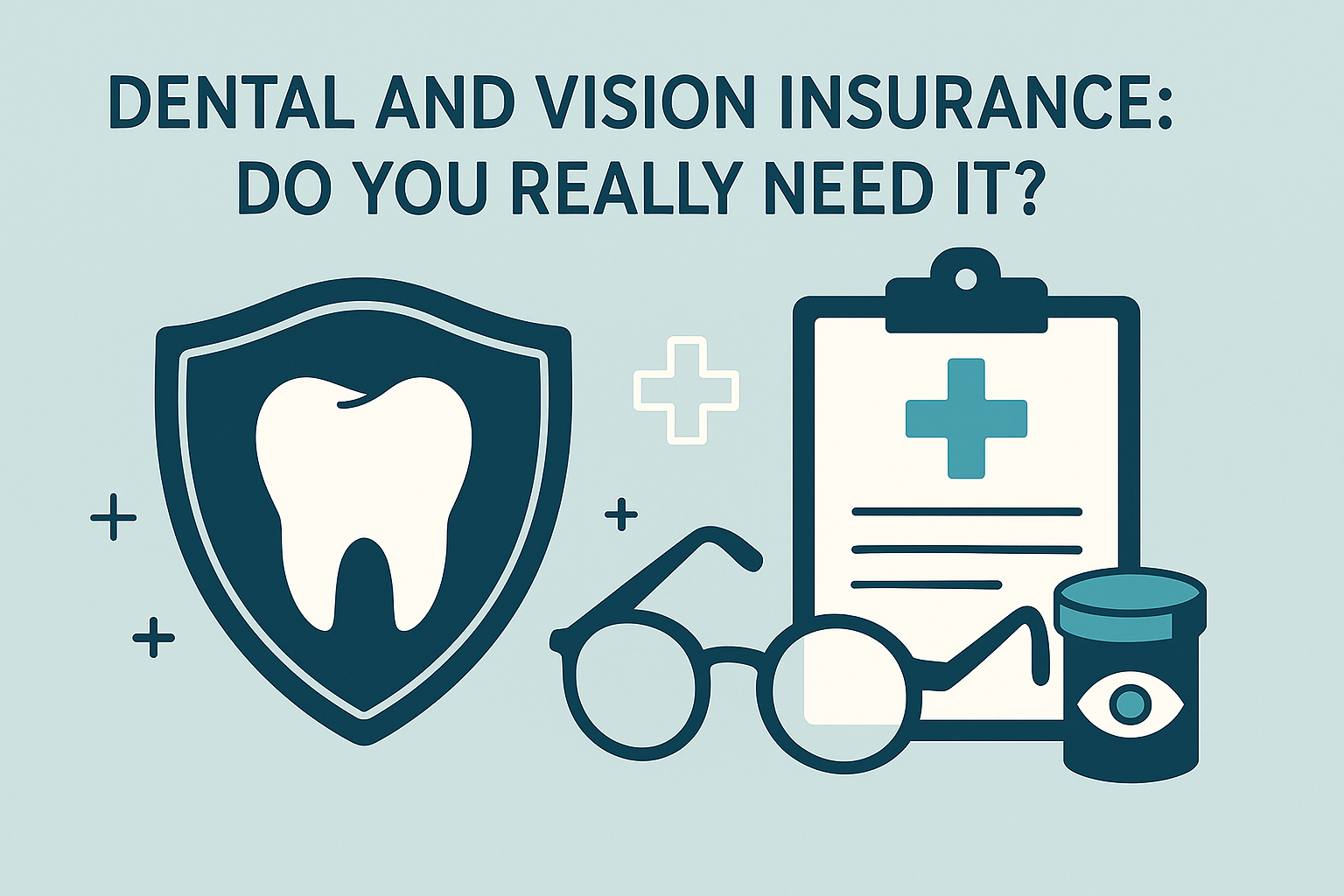When selecting health insurance, dental and vision coverage often come as optional add-ons—or are offered as separate policies altogether. So is it worth the extra premium?
Here’s a look at what these plans typically cover, how much they cost, and who benefits most.
What Dental Insurance Typically Covers
Most dental plans follow a 100-80-50 structure:
-
100% for preventive care (cleanings, exams, x-rays)
-
80% for basic care (fillings, simple extractions)
-
50% for major care (crowns, root canals)
Annual maximums usually range from $1,000 to $2,000, and there may be a waiting period for major procedures.
What Vision Insurance Typically Covers
Vision plans generally include:
-
An annual eye exam
-
A set allowance for frames or contact lenses
-
Discounts on lens enhancements or LASIK surgery
Premiums are usually low, but so are the benefits—unless you need prescription eyewear regularly.
Pros of Buying Dental and Vision Plans
-
Preventive care is covered in full: Regular cleanings and eye exams help catch issues early.
-
Lower out-of-pocket costs for routine services
-
Discounts on big-ticket items like glasses, crowns, or dentures
-
Helps spread costs throughout the year
When It Might Not Be Necessary
If you:
-
Only need infrequent dental or vision care
-
Have access to discount dental programs
-
Are paying high premiums compared to expected benefits
…you might come out ahead by paying out of pocket.
Final Thoughts
Dental and vision insurance can be a smart investment—especially if you need regular care or have a family. But if your needs are minimal, it’s worth crunching the numbers. In many cases, a modest monthly premium is worth the peace of mind and potential savings.

